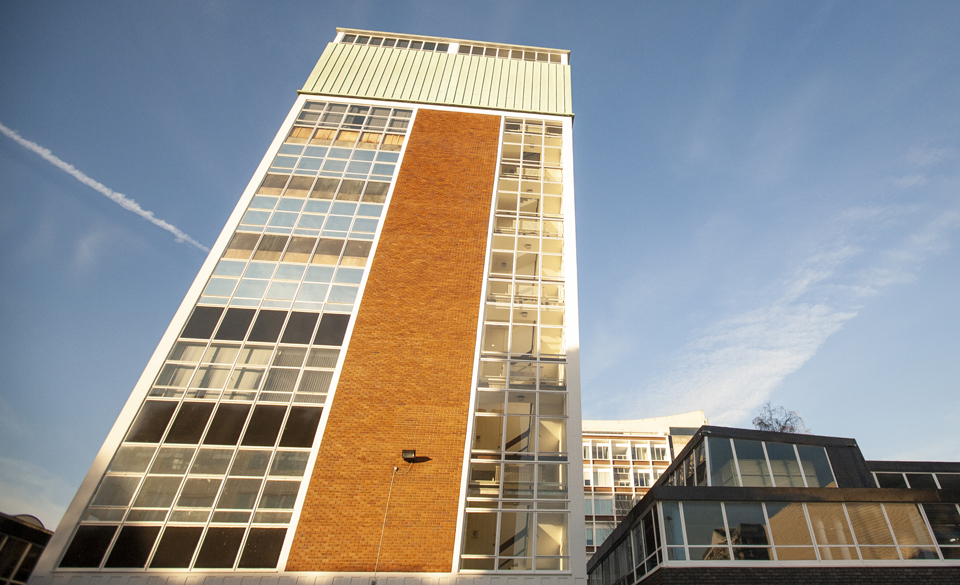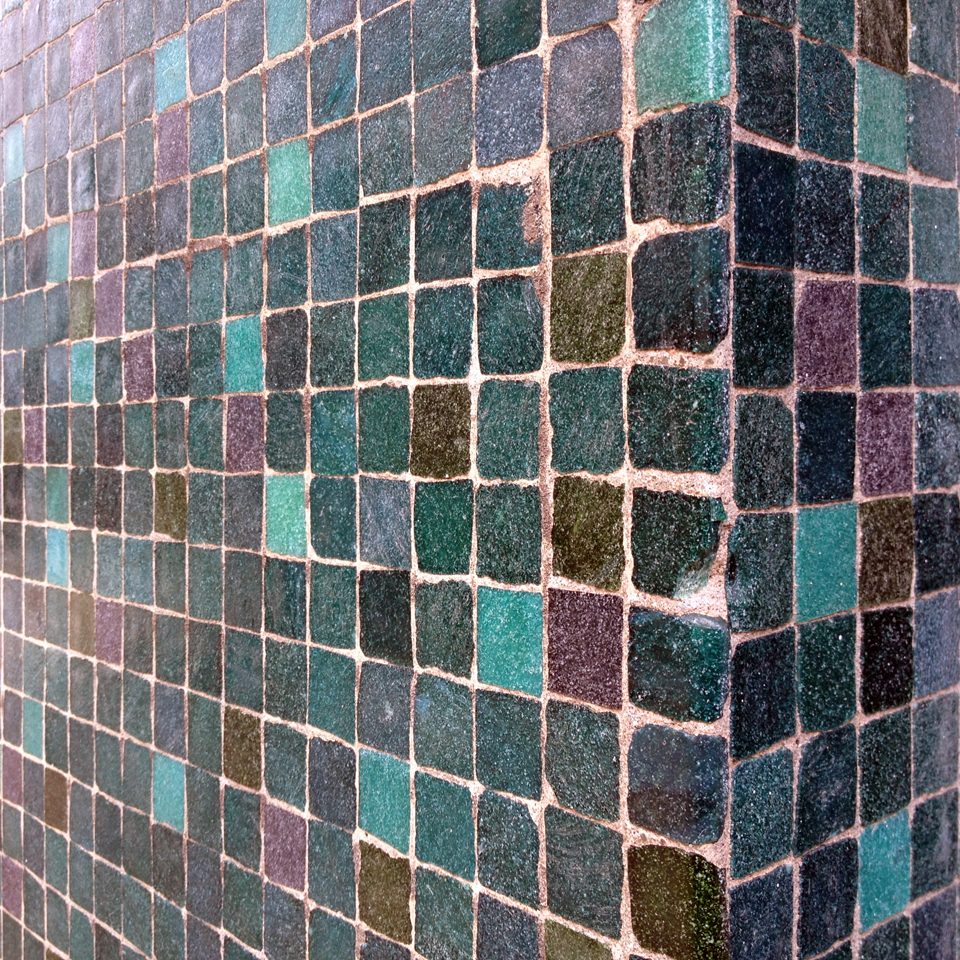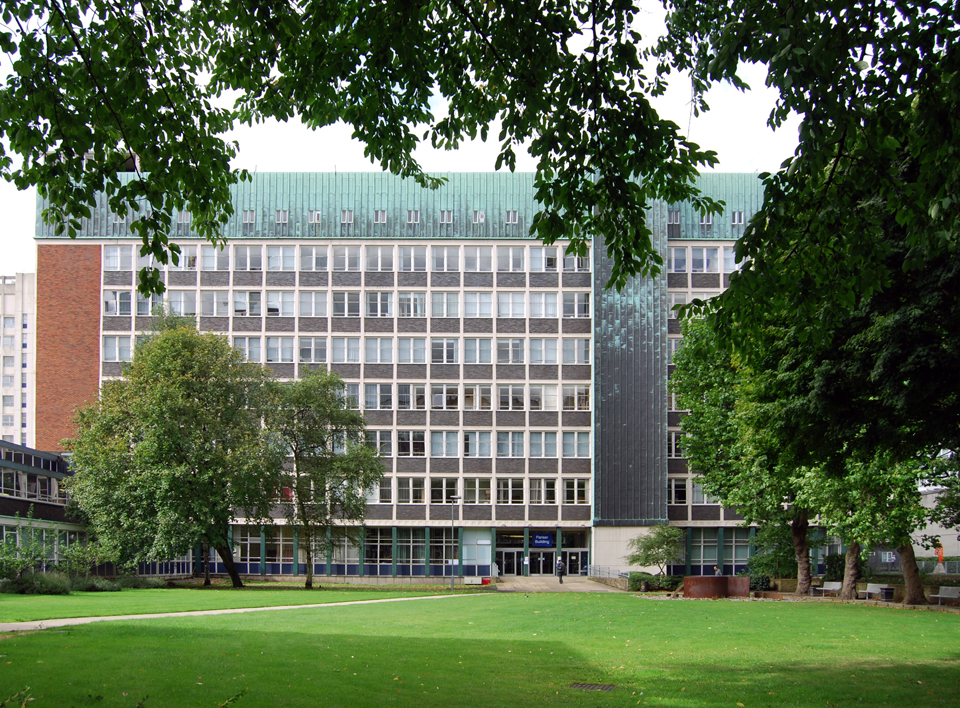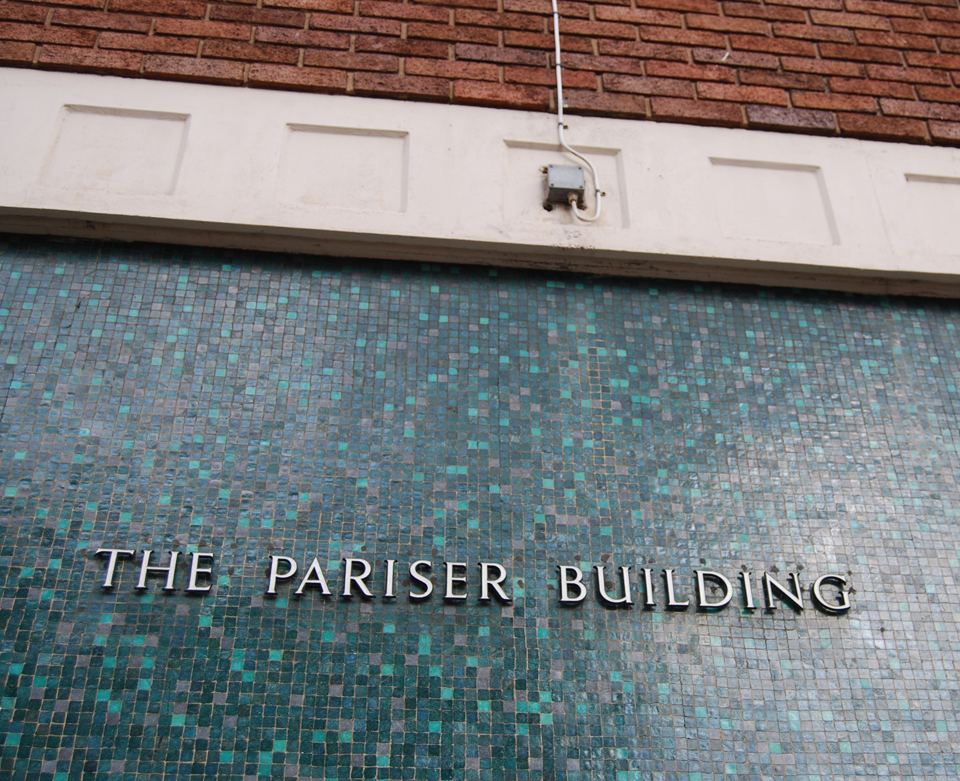Pariser Building
1963
The Pariser Building (named after Alderman Sir Maurice Pariser, Chair of Manchester’s Education Committee) was originally known as the Civil Engineering Building and was part of the post-war development of the UMIST campus. Funding provided by the University Grants Committee had a direct effect on the sequencing of construction on both the site and individual buildings. This was exemplified by Fairhurst’s development of the Civil Engineering building: the sub-committee controlling its development thought the design leant itself more readily to completion in one operation, but also felt the UGC may wish to see this extended over several years. [1] The result was three distinct formal elements, a tower with two workshop blocks flanking it that could be built in one or more phases as required. The nine-storey tower was built on a north-south axis, perpendicular to that of the Renold Building and enclosing the second of two quads within the overall masterplan. It was serviced from the west and the south, to enhance the traffic free qualities of the space formed by its situation. The structure of the tower as envisaged by the Project Architect was to ‘express its function externally’, in line with design guidance. The top two floors housed mechanical plant and a roof top laboratory. These were expressed by means of material differentiation and clad in copper, much like other Fairhurst schemes along Brunswick Street for the University. [3] The College Principal, V.B. Bowden suggested use of new buildings as a study aid for understanding the ‘science of building construction’: a hut was provided for students on site and further studies were published by academics as the scheme went up. This notion permeated the actual architecture of the completed scheme, the structure ‘exposed … so that it can itself be used as a teaching aid’ and the veneers varied on the doors of the Building Department ‘to include all the commonly used timbers’.[4] The precise relationship between curriculum and campus form that was evident later in the New Universities did not exist at UMIST – the site did not permit such. Equally, technological education was moving as rapidly as the industries it served. Bowden often speculated on possible future subject areas. Aware that the building might be used for alternative functions before the end of its life, the architects designed the standard floor plates to be as ‘flexible as possible’. [5] Despite designing for flexibility, the rather crude separation of the building’s formal elements in response to UGC funding streams inhibited the imagination of the architects. The Pariser Building also refers to earlier work by the firm - Fairhurst’s, unlike the other architects designing for the site, seemed encumbered by their stylistic history. This building and those on Brunswick Street for the University are clearly familial. The tone, materiality and detail of each is a development of earlier architectural language developed by H.S. Fairhurst in the pre-war period. Fairhurst were still very much a family firm at this point. [6]
[1] Minutes of the Civil Engineering Block Planning Sub-Committee, 11th October 1957, Item 3, p.102 of the Minutes of the Planning and Development Committee. Ref: TGB/2/5/1.
[2] Minutes of the Planning and Development Committee, p.412. Ref: TGB/2/5/1.
[3] Minutes of the Planning and Development Committee, p.412. Ref: TGB/2/5/1
[4] ‘Civil Engineering Building for Manchester College of Science and Technology’, Official Architecture and Planning, May 1963, p.417, 420.
[5] Ibid. p.417.
[6] See Whittam, W. (1986) Fairhursts Architects: The History of a Manchester Practice (Manchester: Department of History of Art and Design, Manchester Polytechnic).





